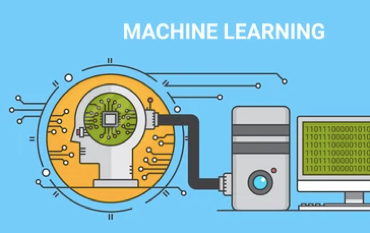Biomedical Statistical Analysis
As an experienced biological data analysis provider, CD Genomics not only provides analysis services for various basic research data (such as high-throughput sequencing data, chip data), but also provides statistical analysis of biomedical data (including clinical data and basic research data). With many years of biomedical data project analysis experience and efficient computing capabilities, we provide doctors and scientific researchers with fast and reliable data analysis services.
Introduction
Biostatistics is the science of applying the principles and methods of mathematical statistics to analyze and explain quantitative phenomena in the biological world. It is also considered the application of mathematical statistics in biological research. It is a branch of applied mathematics and belongs to the category of biological mathematics. Medical statistics is guided by medical theory, applying the principles and methods of mathematical statistics to study the collection, sorting and analysis of medical data, so as to grasp the internal and objective laws of things. For example, the design and analysis of clinical trials is the most obvious application of medical statistics in medicine. With the rapid development of medical technology and the advent of the era of medical big data, in the face of the surge of massive clinical data and basic research data, how to make full use of data and manage data has become more and more important. As the amount of data increases and the demand for analysis increases, the analysis methods of biomedical statistics are also changing with each passing day. For example, artificial intelligence technologies are also applied to various types of data analysis.
CD Genomics Analysis Content
The popular analysis services we provide can satisfy >90% of medical data statistics scenarios. In addition to the following analysis content, we will also provide customized data statistical analysis services according to customer needs.
- Comparative Analysis of Measurement Data
- Measurement data refers to continuous data, usually with specific values, such as clinical height, weight, blood pressure, hemoglobin, and bilirubin, etc. Different statistical analysis methods are adopted for different data types, such as t-test, rank-sum test.
- Learn More
- Statistical Analysis of Classified Data
- Categorical variables are divided into disordered classification and ordered classification. Disordered classification includes binomial classification and multiple classifications, such as count data; ordinal classification refers to the degree of difference between variables and orderly arrangement, such as hierarchical data.
- Learn More
- Regression Analysis
- Regression analysis is to describe the quantitative relationship between variables through certain mathematical expressions and make predictions. Regression analysis is divided into: unary linear regression analysis, multiple linear regression analysis, nonlinear regression analysis, curve estimation, time series curve estimation and other models.
- Learn More
- Correlation Analysis
- In medical research, it is necessary to use correlation analysis to explore which factors are related to the occurrence of a certain disease and the relationship between the disease and the disease. Correlation analysis is often used to determine the wireless relationship, the direction of the correlation, and the strength of the correlation between two numerical variables.
- Learn More
- Statistical Clustering Analysis
- Cluster analysis is a statistical analysis method to classify random phenomena. Without knowing the appropriate number of categories, cluster analysis uses mathematical statistics to properly classify the collected data. In biomedicine, cluster analysis has become the tool of choice for discovering massive amounts of information (including genetic information).
- Learn More
- Principal Component Analysis
- Principal component analysis (PCA) is an analysis method in multivariate analysis methods. PCA is a statistical analysis method for mastering the main contradictions of things. It can analyze the main influencing factors from multiple things, reveal the essence of things, and simplify complex issues. The purpose of calculating principal components is to project high-dimensional data into a lower-dimensional space.
- Learn More
- Survival Analysis
- Survival analysis refers to the method of analyzing and inferring the survival time of organisms or people based on the data obtained from experiments or surveys, and studying the relationship between survival time and outcome and many influencing factors and their degree.
- Learn More
- ROC Curve Analysis
- The receiver operating characteristic curve (ROC curve), also known as the sensitivity curve, is a method of comparing diagnostic tests. The ROC curve actually reflects the relationship between specificity and sensitivity. It is a graph of the relationship between the true positive rate and the false positive rate.
- Learn More
What’s More

In order to meet different types of analysis needs, we use artificial intelligence methods to help biomedical data analysis. We also use cutting-edge algorithm models, machine learning, and deep learning to intelligently analyze complex data logic and explore the nature of data.
Our Service Process
-
Communicate analysis needs
-
Upload data and develop analysis plan
-
Biomedical statistical analysis
-
Generate high-quality results and charts
-
Report interpretation
If you have any questions about the data analysis content, turnaround time and price, please feel free to contact us. We have a professional technical support team to provide services. We look forward to working with you!
* For research use only. Not for use in clinical diagnosis or treatment of humans or animals.
Online Inquiry
Please submit a detailed description of your project. Our industry-leading scientists will review the information provided as soon as possible. You can also send emails directly to for inquiries.
